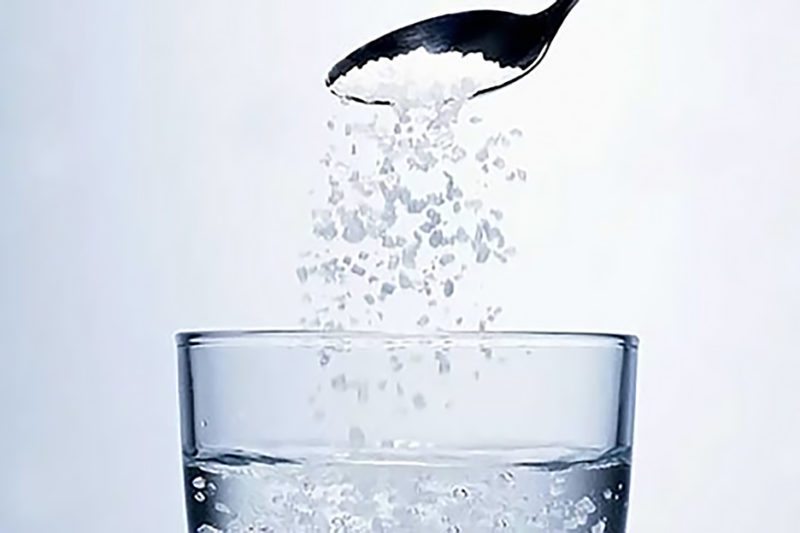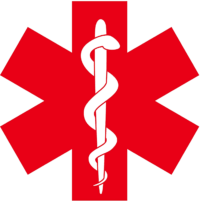

Have you started a low-carbohydrate diet and are experiencing muscle cramps, headaches, or constipation as a result of the side effects? If you follow the advice on this page, you will feel much better while losing weight. Increasing your water and salt intake is the simplest solution to the problems that can arise when switching to a low-carb diet. It’s especially important for the first week. You’ll be able to avoid or reduce side effects.
The most common side effect of changing eating habits during the first week of following a low-carbohydrate diet is flu-like symptoms. They usually occur on days two to four. These symptoms include fatigue, lethargy, and a lack of motivation. There may also be nausea, as well as a state of confusion known as “brain fog” – a heaviness of thoughts. Nervousness and irritation may also be present. There’s no need to be concerned because these symptoms usually go away on their own after a few days. Even better, they are usually avoidable. Their appearance is usually caused by dehydration and salt deficiency as a result of increased urine production.
Solution: Water and salt
 Virtually any of these problems can be significantly alleviated or eliminated by providing the body with adequate amounts of water and salt. It’s worth trying to drink a large glass of water with half a teaspoon of salt in it. Within 15-30 minutes, symptoms should be reduced or gone completely. This should be done once a day for the first week if necessary. Drinking broth twice a day is an even better and tastier option. The most recommended broth is pure broth.
Virtually any of these problems can be significantly alleviated or eliminated by providing the body with adequate amounts of water and salt. It’s worth trying to drink a large glass of water with half a teaspoon of salt in it. Within 15-30 minutes, symptoms should be reduced or gone completely. This should be done once a day for the first week if necessary. Drinking broth twice a day is an even better and tastier option. The most recommended broth is pure broth.
More fat
Make sure you are getting the right amount of fat in your body. Its deficiency can lead to a feeling of hunger and fatigue. When following a properly structured ketogenic diet, which provides enough fat to keep you feeling satiated and full of energy, these phenomena should not be accepted. Keeping enough fat on your body will speed up the transition and reduce the amount of time you feel weak in the beginning.
If necessary
If increasing the amount of water and salt you drink does not resolve the initial problems, simply sticking to your diet is the best option. Any side effects usually disappear after a few days after the body switches to burning fat.
Calf cramps are also common during the early stages of keto adaptation. They aren’t particularly bothersome, but they can be painful. They can show up as a result of a decrease in magnesium levels being washed out by the increased amount of urine. To stay away from them, you should:
1. drink plenty of water and provide the body with salt
2. consume magnesium as a supplement if needed
3. consider increasing the number of carbohydrates you eat
In the latter case, it must be remembered that a slight increase in carbohydrate intake will help with the cramps, but will reduce the effects of the diet and slow down weight loss.
Constipation is another side effect that can occur when following a low-carbohydrate diet. What is the best way to get rid of it?
 Some people may develop breath that smells like nail polish remover when they follow a strict low-carbohydrate diet. It comes from the acetone produced, which indicates that the body is converting a lot of fat into ketones. This odour can also be detected in sweat, especially when exercising.
Some people may develop breath that smells like nail polish remover when they follow a strict low-carbohydrate diet. It comes from the acetone produced, which indicates that the body is converting a lot of fat into ketones. This odour can also be detected in sweat, especially when exercising.
This is not a symptom of all people on a low-carbohydrate ketogenic diet, and it usually disappears after a week or two. The body adapts and the ketones are no longer palpable in the breath or sweat.
In some cases, this symptom continues and causes a problem. Here are some solutions. The first two are more general, the next three are directly related to the problem of ketone odour.
1. Consume plenty of water and salt to keep your body healthy. When you have a dry mouth (which happens a lot when you start a low-carb diet and enter ketosis), it means there isn’t enough saliva to flush bacteria out of your mouth, which can lead to bad breath.
2. Take care of oral hygiene. Brushing your teeth twice a day will not stop the odour associated with ketosis, but it will prevent other unpleasant odours from mixing with it.
3. Use a mouth freshener regularly.
4. Wait a week or two. The unpleasant mouth odour usually disappears on its own.
5. Reduce the amount of ketosis in your body. Reduced ketosis is the solution if your problem lasts for a long time. This involves consuming only a small amount of carbohydrates per day (around 50-70g) in order to end ketosis. Of course, this will reduce the diet’s weight-loss effects, but they will be visible in many cases. Another option is to consume 50-70g of carbohydrates per day while fasting intermittently. This will give you almost the same results as a strict low-carbohydrate diet, but you won’t have to deal with any unpleasant odours.
 A mildly elevated heart rate during the first few weeks of following a low-carbohydrate diet is a fairly common symptom. You may also feel your heart beating a little harder. This is perfectly normal and should not be disturbing.
A mildly elevated heart rate during the first few weeks of following a low-carbohydrate diet is a fairly common symptom. You may also feel your heart beating a little harder. This is perfectly normal and should not be disturbing.
The cause is usually dehydration and a lack of salt. By reducing the amount of fluid in the bloodstream, the heart has to work a little harder and faster to maintain adequate blood pressure.
Solution
The quickest solution to the problem is to take care of the right amount of water you drink and provide your body with salt.
If necessary
If water and salt do not solve the problem, it may be caused by the increased production of stress hormones designed to maintain blood sugar levels (see the section below if you are taking diabetes medications). This is usually a temporary condition as the body becomes accustomed to a low carbohydrate diet and should resolve on its own within a week or two.
However, if the problem persists for a long time and you are concerned, you can slightly increase the number of carbohydrates you eat. However, keep in mind that this will lessen the diet’s effects.
 Diabetes
Diabetes
Avoiding carbohydrates that raise blood sugar reduces the need for medication to lower it. The same dose of insulin that you were taking before adapting to a low-carbohydrate diet can cause your blood sugar to go too low, which may cause heart palpitations.
When changing your eating habits and switching to this diet, you should regularly measure your blood sugar and adjust the doses of your medicine accordingly. Such actions should only be undertaken after consulting with a physician. There is no risk of hyperglycemia if diabetes is treated solely through diet or the use of metformin.
We encourage you to read the article: “Can diabetes be cured?”
Hypertension
When you eat a low-carbohydrate diet, your blood pressure usually returns to normal. As a result, you’ll need less medication, and the dose you’ve been taking may be too high, causing your blood pressure to drop too low. Heart palpitations and an elevated heart rate are two possible symptoms. After that, you should check your blood pressure regularly, and if it drops too low (below 110/70), speak with your doctor about lowering the dose or stopping the medication.
When you switch to a low-carbohydrate diet, your physical capacity may be significantly reduced. This is due to two factors:
Despite the initial decline in performance, the long-term effects of a low-carbohydrate diet have many benefits that have only recently been appreciated. Many great athletes have experimented with these nutritional principles and have become unrivalled in their fields as a result.
Long-distance runners and endurance athletes reap the greatest benefits. This is due to the fact that your fat reserves are vast in comparison to the amount of glycogen stored in your body. This means that once athletes have adapted to fat-burning, they will be able to exert themselves for much longer periods of time without requiring additional energy. This eliminates the need for the digestive system to work during exercise, allowing more blood to flow to the muscles. It also lowers the chances of stomach issues during periods of increased physical activity.
Another benefit of a low-carbohydrate diet is the reduction of body fat, which is beneficial in almost every sport.
Almost any dietary change can result in temporary hair loss. This occurs most frequently when caloric intake is drastically reduced (for example, during fasting), but it can also happen when following a low-carbohydrate diet. The problem usually appears 3 to 6 months after the changes are made and are visible when brushing your hair.
The good news is that even if you do have a problem, it will only be temporary and will go unnoticed by others. The hair will regrow strong and thick after a few months. The length of time it takes to complete this process is, of course, determined by the length of your hair.
The reasons
On average, each hair on the head grows for 2 to 3 years. After this time, there is a break in growth, lasting up to 3 months. A new hair then starts to grow in the same hair follicle, pushing out the old one.
We lose hair every day, but it is not noticeable because it does not grow at the same time. One hair falls out and another starts to grow in its place, so we always have the same amount of hair on the head.
When the body is under a lot of stress, more hair than usual can go into the resting phase at the same time. The following are possible explanations:
Reactivating the hair follicles a few months later causes hair in the resting phase to start falling out almost simultaneously. This phenomenon is called “telogen effluvium” in medical jargon and is relatively common.
What to do?
If you were in labour or dieting in the 3-6 months before the problem, you don’t need to do anything. Symptoms will most likely be temporary.
Giving up the diet will not accelerate hair growth, and if this symptom occurs, it cannot be stopped – hair in the resting phase will fall out regardless of the actions taken.
How to reduce the risk of hair loss when switching to a low-carbohydrate diet?
First of all, this phenomenon is relatively rare, most people do not notice the occurrence of such a problem. There is no research to answer the question of reducing the likelihood of hair loss, but keeping the calories you eat can help. This means that a low-carbohydrate diet should not be combined with a low-fat diet. However, you should consume enough fat to prevent hunger.
Reducing other sources of stress on your body during the first few weeks of following a low-carbohydrate diet may also help. You need to ensure the proper quality of sleep and not introduce an intensive training program at the same time (we advise you to wait at least a few weeks).
First and foremost, good information. The keto diet is known to lower cholesterol levels, which lowers the risk of heart disease.
A slight increase in overall cholesterol is usually the result of introducing a diet, which is caused by a rise in good cholesterol (HDL). The overall cholesterol profile improves as well, with lower levels of triglycerides and bad cholesterol (LDL). It’s also been proven that following a low-carbohydrate diet for two years can help with atherosclerosis symptoms.
Results that need attention
The overall increase in cholesterol, and especially LDL cholesterol, is almost imperceptible in most cases. However, in about 2% of cases, there may be an increase that cannot be overlooked. After that, appropriate measures should be taken to counteract it.
When following a strict low-carbohydrate diet, a small percentage of people (possibly due to genetic reasons) may show an increase in overall cholesterol levels in excess of 400 mg/dl (10mmol/l), and LDL cholesterol levels may exceed 250 mg/dl (6.5 mmol/l). In such cases, high apoB and apoB/A1 values are found in addition to high LDL levels, increasing the risk of heart disease.
What to do?
1. Stop drinking coffee with added fats (eg coconut oil). This alone can improve cholesterol levels.
2. Eat only when you are hungry and consider intermittent fasting as it will permanently lower your cholesterol levels.
3. Eat more unsaturated fats (from olive oil, fish, or avocados).
4. If the above three steps do not solve the problem: Consider whether you need a ketogenic diet for health reasons. It may be enough to eat a diet that allows 50-100g of carbohydrate per day. However, remember that the source of carbohydrates should not be sugar, flour, or other processed products.
Statins – is it worth using them?
The introduction of statins (drugs that lower blood cholesterol) is often taken into account when cholesterol levels are too high. The use of these drugs reduces the likelihood of heart disease but has the potential for significant side effects: reduced energy, muscle aches, type 2 diabetes, and a slight reduction in IQ.
In those at high risk of heart disease, taking statins for five years decreases the chance of a heart attack by 1% and extends life by only three days on average.
The benefits of statin use are very modest at best. It should also be taken into account that research on their effectiveness is financed by the largest pharmaceutical companies. It seems clear that changing lifestyle and eating habits will have a much greater and better effect on health in the long run than taking statin drugs.
Alcohol tolerance is reduced when you eat a low-carbohydrate diet. When you have your first drink while using it, keep this in mind. Tolerance has been reduced by about half. You will save money at the bar as a result of this. The reasons for this are unknown at this time. It’s thought that the liver is working harder to produce ketones or glucose, which reduces its ability to burn alcohol.
Another reason could be that the liver processes both alcohol and sugar in the same way. You can wean yourself off of alcohol processing by reducing the amount of sugar you consume. The same thing happens when you reduce the amount of alcohol you drink.
Receive tips, articles and all the goodies absolutely free, straight to your inbox!